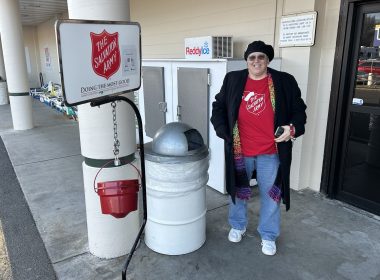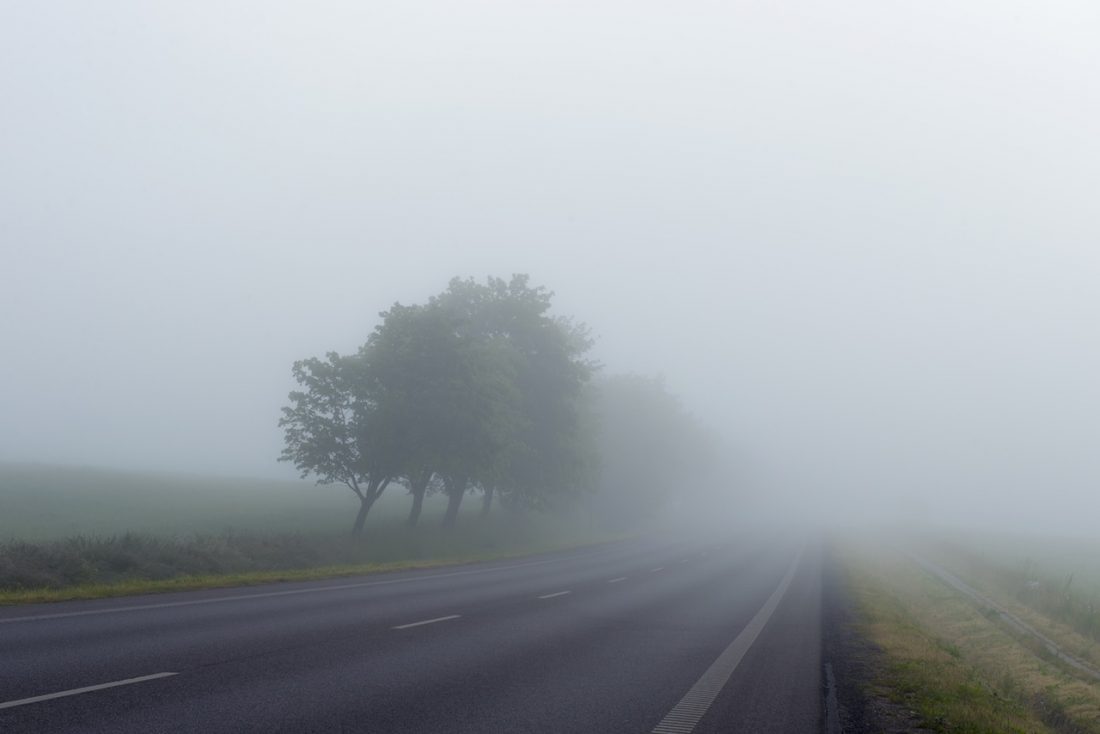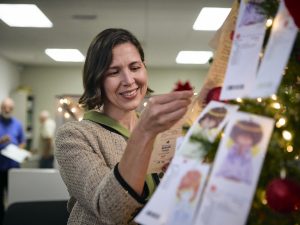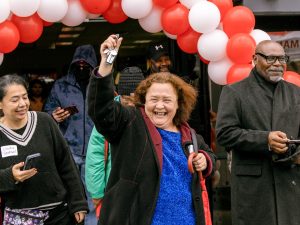Refugees set themselves apart as survivors, but they are not safe from the holds of addiction.
Patrick’s family was strikingly different from other refugee families that had recently resettled in the small, southern town in the United States.
Like others, his family spent years fleeing their home after it became unsafe to remain. He finally made it to the United States after migrating from one African country to another and living for years in a refugee camp. Patrick arrived in the U.S. with his second wife, whom he met in a refugee camp, and two teenage children from his first marriage.
The family visited our small community center, and Patrick tutored me about working with people from his culture and community. As a young, white girl, I tried to learn all I could from his advice. Yet, soon after the family’s arrival, Patrick began visibly deteriorating—his eyes often glazed and distant—as he realized his hope of finding a teaching job was not realistic due to U.S. licensure and accreditation requirements.
I often talked with his wife, and months later she announced that she was pregnant and expecting her second child. It took time and trust before she felt safe enough to share with me that she and Patrick were unable to bring their firstborn son to the United States with them; her mother was raising him, back in their home country. A local law school had taken on their family reunification case pro-bono, but it was taking more time than expected.
Then, I received a call one day from the resettlement agency that had worked with Patrick’s family since arrival. He had been put on probation for domestic violence while intoxicated, but the local police were willing to work with him instead of immediately taking custody of his children.
Patrick is just one of the estimated 10.4 million refugees of concern in the world right now, according to the Office of the United Nations (UN) High Commissioner for Refugees. The UN Convention in 1951 defined a refugee as someone who “owing to a well-founded fear of being persecuted for reasons of race, religion, nationality, membership in a particular social group, or political opinion, is outside the country of his nationality, and is unable to or, owing to such fear, is unwilling to avail himself of the protection of that country.”
According to the Office of Refugee Resettlement, the United States resettles more refugees than all other countries combined. In 2012, the U.S. resettled about 60,000 incoming refugees, who were then dispersed throughout the country through voluntary agencies.
Within months, refugees are expected to transition into a new life in America, enrolling in schools and finding sustainable means of income. Refugees often come to the United States with grandiose ideas of finally attaining a desired and high quality life, which is exasperated by orientation trainings and videos in refugee camps that portray the “American dream.”
The Asian Pacific Development Center (APDC) in Aurora, Colo., is one organization that aims to assist Asian immigrants and refugees in obtaining health and wellness. Voluntary agencies typically focus services to refugees upon arrival in the United States on English language classes, job training, employment training and placement, cash assistance, legal services and health care. Yet Eugene Yom, an APDC clinician, said many working in the field admit to a flawed system that does not support acculturation and success for refugee families, specifically for those refugees facing mental health issues.
By the end of 2013, 51.2 million individuals were forcibly displaced worldwide as a result of persecution, conflict, generalized violence, or human rights violations. Some 11.7 million people were refugees under the Office of the United Nations High Commissioner for Refugees mandate. The global figure included 33.3 million internally displaced persons and close to 1.2 million asylum-seekers. If these 51.2 million persons were a nation, they would make up the 26th largest in the world.
SOURCE: UNHCR Global Trends 2013 report
APDC focuses treatment on the primary diagnoses seen in incoming refugee populations, specifically Post-Traumatic Stress Disorder, adjustment disorders and depression. It recognizes that the issue of addiction and substance abuse represents a pressing concern for incoming populations.
Substance abuse in refugee populations can develop in the home country, during the refugee migration or in the resettlement country, according to a 2011 study published in Conflict & Health. Earlier research found that some cultures may use alcohol or other substances in traditional cultural practices, and in many refugee camps substances are easy to obtain. Further, substance abuse is linked to higher rates of gender-based violence, physical assault and suicide in refugee camps.
“The issues of substance use within my community is deep-rooted and common as a homemade remedy to act as a painkiller or sedative,” said Setu Nepal, a Bhutanese of Nepali origin and community leader at APDC. “Many Bhutanese Nepali refugees coming to to the United States have spent 15-20 years in refugee camps where drugs and alcohol were easy to obtain and use. Whatever was practiced in the refugee camp is practiced here.”
In the Bhutanese of Nepali origin refugee youth community, high substance abuse is a result of isolation and boredom, said Bikash Nepal, a community navigator at APDC. He explained a trend, in which he saw many families and individuals “crashing” within two years of resettlement, often resulting in an attempt to escape from the overwhelming experience of being in a new environment with no hope of language proficiency or engaging in meaningful and sustainable work. With the high substance abuse tendency in refugee camps overseas, he too sees his community members returning to previous coping skills in order to survive their new life here.
Learning about the refugee experience is like a modern-day archeological dig, with each layer uncovered revealing a whole new reality of past experiences. The more we find, the more we realize how much we don’t know. Traditional substance abuse treatments are not sufficient for addressing deep-rooted and complicating factors that exacerbate addictions within the refugee population, and so we must find a meaningful way to address the issue for this unique group.
Effective treatment for addiction in refugee populations should focus on incorporating a variety of wellness aspects. As Bikash Nepal explained, treatment would “have to be indirect” and “less offensive,” allowing for real stigma associated with addiction to be dealt with in a culturally appropriate way, possibly working with individuals to replace addiction with productive activities that restore meaning and decrease isolation.
Geri Tien, a clinician at APDC, explained that some cultures stigmatize honesty about struggle and hardship, increasing the likelihood of either obtaining or treating a silent disease like addiction. Nor-Ohgan Saito, a community navigator from Burma, reiterated the difficulty that her community members have in admitting addiction directly. While this may not be far off from mainstream addiction issues, cultural practices and stigma call in question the relevance of traditional support group treatment.
Education about long-term effects of alcohol use, legal implications, particularly related to citizenship and employment, and the effects of substance abuse on one’s health and family are imperative in any addiction treatment. In addition, APDC staff work to integrate behavioral health components into primary care treatment for each client, which may allow for a less obtrusive approach to treatment that focuses on a broad view of health.
Since working with Patrick and his family, I’ve become further immersed in working directly within the mental health sector of refugee health. His story stands out as an example of an acculturation process complicated by initial expectations of success that were shattered after arrival. Patrick’s high education level and impeccable English set him apart from many other refugees, making him a natural “community leader” who could easily support the acculturation of other refugee families. Over time, however, he proved one of the most frustrating things about addiction: it is not selective and it will take hold of anyone it can.
Although coming from such diversity, refugees often have commonalities in the experience of loss, hopelessness and trauma. When faced with these life-altering experiences, refugees have set themselves apart as survivors, with histories containing stories of tremendous courage and resilience. Yet, refugees are not safe from the holds of addiction. We must throw out our old conceptions of treating addiction as an isolated problem and work with individuals, to walk alongside them as they create home once again.
[button color=”black” size=”normal” alignment=”none” rel=”follow” openin=”newwindow” url=”unhcr.org”]Learn more about refugees and the work of the United Nations Refugee Agency at unhcr.org, including current data on the world’s displaced people.[/button]











